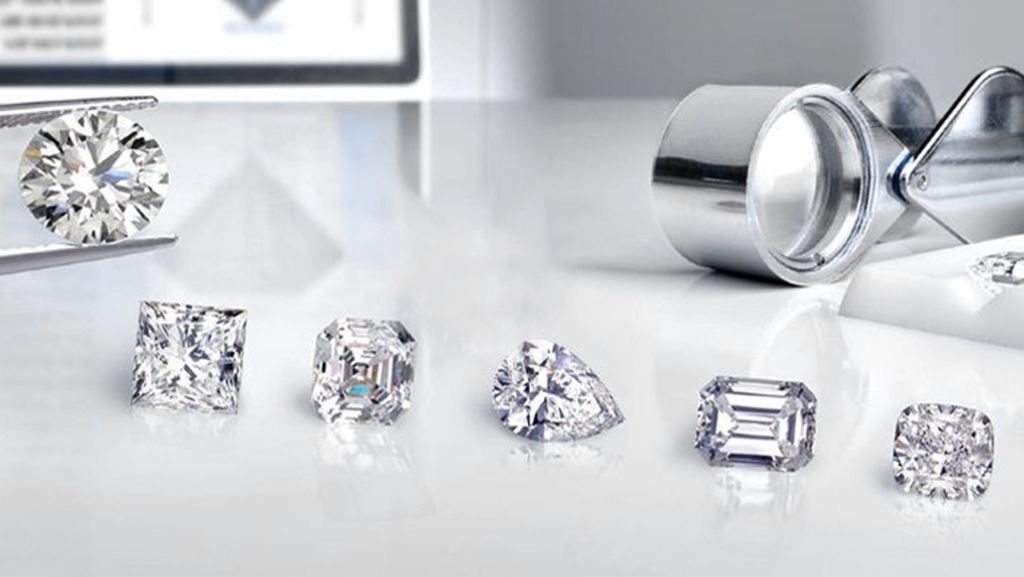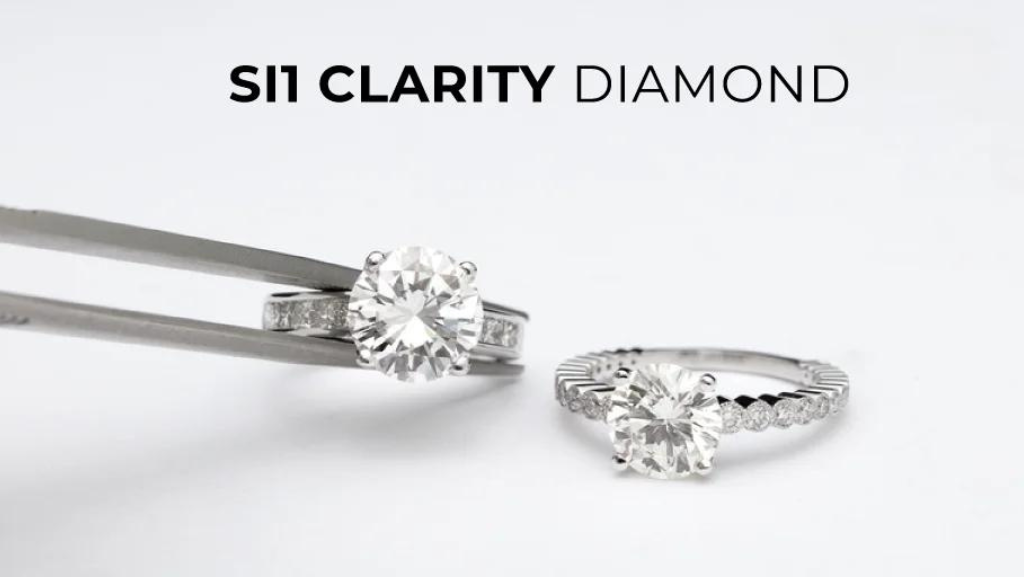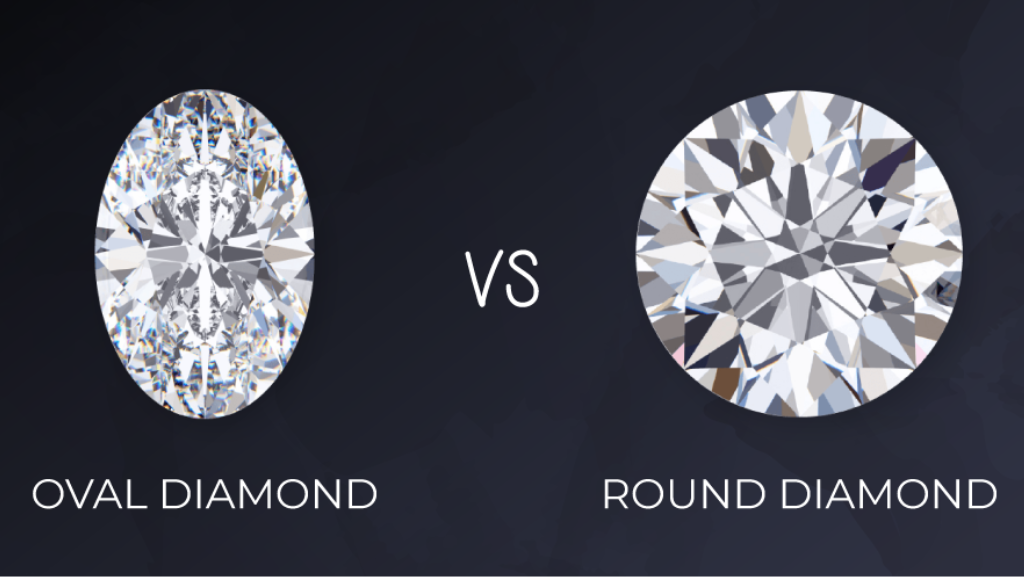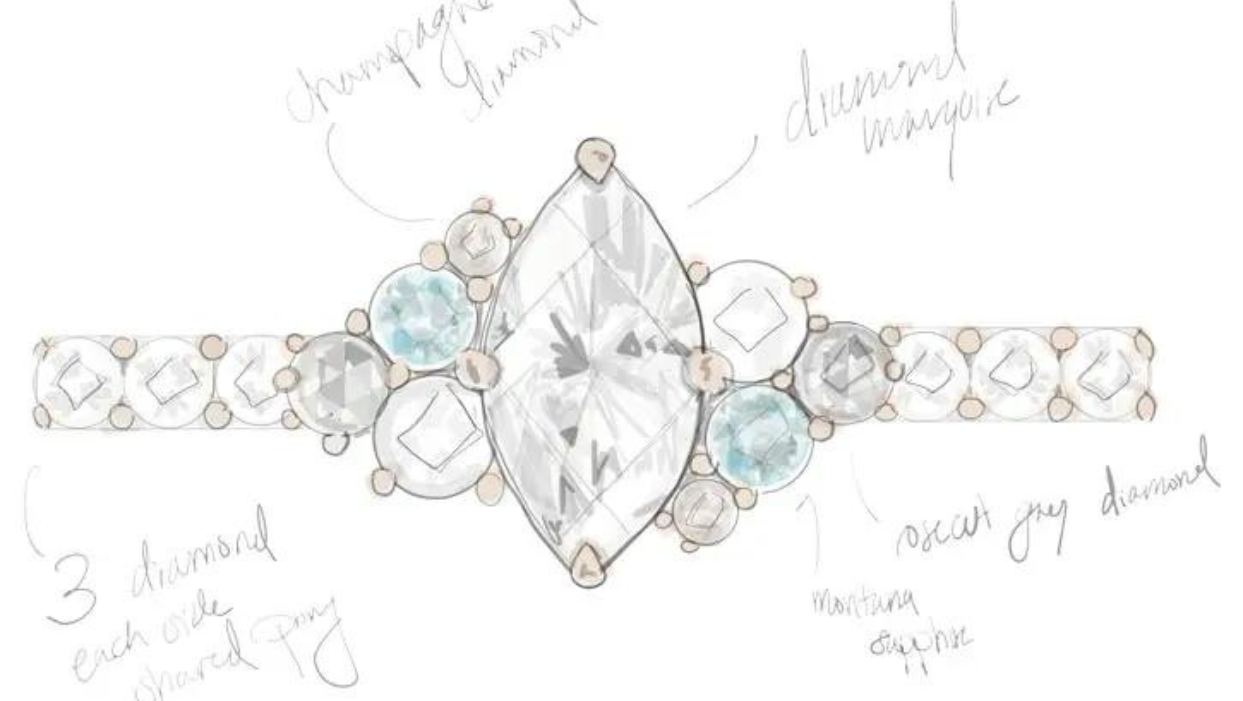Why Lab Created G Color Diamonds are the Trend in Jewelry!
When it comes to the world of diamonds, the color grade plays a significant role in determining their value and overall beauty. Among the various color grades, G color diamonds hold a special place.
But what exactly is a G color diamond, and what does this color grade signify? In this blog post, we will delve into the fascinating world of G color diamonds, exploring their characteristics, significance, and how they contribute to the allure of these precious gemstones.
The question arises – is a G color diamond good or bad? The answer lies in personal preferences and individual considerations. While some may prioritize absolute colorlessness, others appreciate the slight warmth and character that G color diamonds offer.
G color diamonds are often an excellent choice for those seeking a balance between quality and budget, as they tend to be more affordable compared to higher color grades while still delivering exceptional beauty.
Enhancing the Brilliance of G Color Diamonds: Tips to Make Them Look Whiter
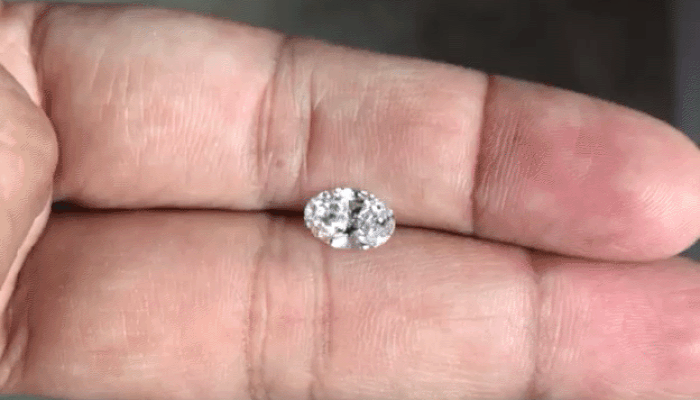
When it comes to making a G color diamond appear whiter, understanding the interplay between diamond colors and clarity can be invaluable. The diamond color scale provides a framework for assessing a diamond’s hue, while clarity characteristics influence its overall visual appearance. By leveraging these concepts, you can maximize the whiteness of your lab created diamond G color.
One effective strategy is to prioritize diamonds with excellent clarity grades. Diamonds with minimal inclusions or blemishes allow more light to pass through, reducing any distractions that might affect the diamond’s perceived color. This clarity-focused approach enhances the diamond’s brilliance and highlights its whiteness, creating a visually striking effect.
Additionally, selecting lab diamonds with well-cut proportions can optimize their light performance and minimize color dispersion. A well-cut G color diamond reflects light more efficiently, making it appear brighter and more vibrant.
This emphasis on precision and symmetry diverts attention from any faint warmth in the stone, resulting in a whiter-looking diamond. Understanding lab diamond colors and the diamond color scale, alongside clarity, empowers you to make informed choices when aiming to enhance the whiteness of your diamond color G.
By selecting diamonds with excellent clarity and superior cut quality, you can elevate the brilliance and whiteness of your G color diamond, ensuring that it captivates with its luminosity and near-colorless allure.
How Much is a Diamond G?
Generally, G color diamonds are considered near colorless and are priced at a premium compared to lower color grades. Lab grown diamonds are often more affordable than natural diamonds.
Medium Size 0.25 to 0.5 carat Starting from around $150 and can go up to $5000 or more. Larger sizes start from $5000 and can go up to $50,000 or more.
You can check out Loose Grown Diamond’s specialized “Diamond Size Chart” guide for measuring diamond sizes. This diamond size chart will give you a thorough approach to identifying your size.
Furthermore, if you find yourself uncertain about assessing the price of your selected diamond, you can take advantage of our diamond price calculator.
| Shape | Carat | Cut | Color | Clarity | Price | |
| 2.04 | Ideal | G | VS2 | $476 $453 | View | |
| 2.01 | Ideal | E | SI1 | $492 $469 | View | |
| 1.83 | Ideal | F | VS2 | $496 $472 | View | |
| 2.08 | Excellent | E | SI1 | $1161 $987 | View | |
| 1.94 | Excellent | E | VS2 | $1086 $923 | View | |
| 2.00 | Excellent | F | SI1 | $1119 $951 | View | |
| 2.54 | Ideal | E | SI1 | $6720 $5040 | View | |
| 2.02 | Ideal | E | SI1 | $5521 $4141 | View | |
| 1.58 | Excellent | E | SI1 | $3472 $2951 | View | |
| 1.51 | Ideal | E | SI1 | $3465 $2599 | View | |
| 1.55 | Excellent | E | SI2 | $3184 $2706 | View | |
| 2.01 | Excellent | J | SI1 | $22688 $19285 | View | |
| 1.30 | Excellent | E | VS2 | $356 $303 | View | |
| 1.60 | Ideal | E | SI1 | $3864 $2898 | View | |
| 2.35 | Ideal | E | SI2 | $5872 $4404 | View | |
| 1.56 | Excellent | E | SI1 | $3427 $2913 | View | |
| 1.62 | Ideal | E | SI1 | $3912 $2934 | View | |
| 2.02 | Ideal | F | VS2 | $1717 $1288 | View | |
| 1.50 | Ideal | F | VS2 | $1029 $772 | View | |
| 2.02 | Ideal | E | VS2 | $1548 $1161 | View |
Pros & Cons of G Color Diamond
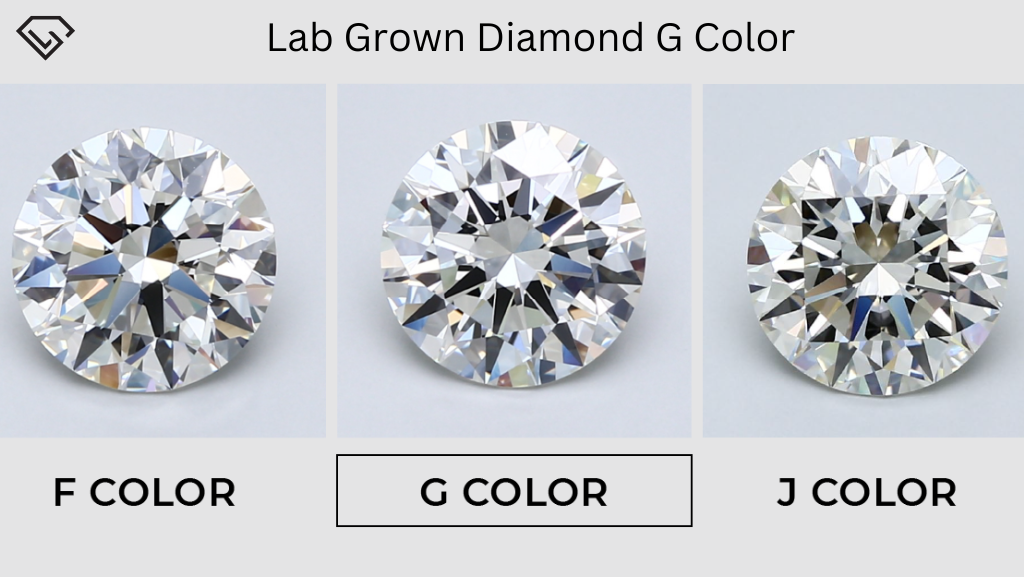
G color diamonds, with their near-colorless appearance, have become a popular choice in the diamond market. They offer a range of advantages and considerations that potential buyers should be aware of. In this article, we will explore the pros and cons of G color diamonds in detail.
Pros:
Near-Colorless Appearance: G color diamonds exhibit a nearly colorless appearance, making them visually appealing. They are considered one of the best value options in terms of achieving a balance between quality and price. While they may have a subtle hint of warmth or yellowish undertones, these characteristics are often not easily discernible to the naked eye, offering a beautiful diamond that appears bright and sparkling.
Versatility: G color diamonds are versatile and can complement a variety of metal settings and jewelry designs. They pair well with both white and yellow metals, allowing for more flexibility in creating unique and personalized pieces. Whether you prefer a traditional or contemporary setting, G color diamonds can enhance the beauty and elegance of any jewelry design.
Value for Money: Compared to higher color grades like D or E, G color diamonds are more affordable while still offering an impressive visual appearance. They provide excellent value for those seeking a high-quality diamond within a specific budget. Choosing a color G diamond allows you to allocate more of your budget towards other important factors such as cut, clarity, and carat weight.
Cons:
Subtle Warmth: One of the main considerations with G color diamonds is the presence of a slight warmth or yellowish undertones. Although these characteristics are typically not prominent, they may become more noticeable in larger diamond sizes or when compared side by side with higher color grades. Individuals with a highly discerning eye for color may prefer a higher color grade to achieve a truly colorless appearance.
Clarity Sensitivity: The color of a diamond can influence its perceived clarity. In the case of G color lab diamonds, the presence of slight warmth may make inclusions or blemishes more noticeable to some individuals. It’s important to consider the clarity grade of a diamond color G and ensure that any inclusions are not too visible to the naked eye. Opting for a higher clarity grade, such as VS or VVS, can help mitigate this concern.
Lighting Conditions: Like all diamonds, color G diamonds can exhibit different appearances under varying lighting conditions. They may appear slightly warmer in certain lighting settings, such as warm or yellow-toned lighting. However, it’s worth noting that under everyday lighting, G color diamonds appear bright and white.
Personal Preference: The choice of diamond color is highly subjective and depends on individual preferences. While G color diamonds offer a near-colorless appearance, some individuals may prefer a completely colorless diamond and opt for higher color grades. It’s crucial to consider your personal style and preferences when selecting a color G diamond.
G color diamonds provide several advantages, including their near-colorless appearance, versatility, and value for money. They offer a visually appealing option that strikes a balance between quality and affordability. However, it’s important to consider the slight warmth, sensitivity to clarity, and personal preferences when choosing a G color diamond.
G Color Diamond is Best for an Engagement Ring?
The price of a G color diamond can vary depending on various factors, including the diamond’s clarity grade and carat weight. Generally, a G color diamond will have a lower price compared to higher color grades like D or E. However, it’s important to consider the impact of clarity grades on the price as well.
For example, a VS2 G color diamond, which has a higher clarity grade compared to lower clarity grades like SI1 or SI2, may command a higher price due to its superior clarity characteristics. The VS2 clarity grade indicates that the diamond has minor inclusions that are not easily visible to the naked eye, adding to its value and overall appeal.
Similarly, a VS1 G color diamond, with even fewer inclusions and potentially higher clarity, may be priced higher compared to a VS2 or lower clarity grade. The higher the clarity grade, the rarer and more valuable the diamond becomes.
When it comes to a carat weight, a 2-carat G color diamond will generally be more expensive compared to a smaller carat weight color G diamond. Larger carat weights command higher prices due to their rarity and increased demand.
Overall, the price of a G color diamond can vary depending on factors such as clarity grade and carat weight. It’s recommended to consult with reputable jewelers or online diamond retailers to get specific pricing information and to compare options based on your desired specifications and budget.
Ready to create your perfect ring?
Where Can I Buy G Color Lab Diamonds?
If you choose to buy diamonds online, it can be profitable for you. You can save up to 20% by buying diamonds online. You can purchase G color lab diamonds from various reputable sources specializing in Lab Grown Diamonds. Consider purchasing directly from lab grown diamond producers.
Ensure that the diamonds come with proper certification, like IGI or GIA. It’s essential to buy from trusted sources to ensure quality and authenticity. You can apply the promo code during checkout for a discount.
Conclusion
In conclusion, the price of a color G diamond is influenced by various factors, including clarity grade and carat weight. While G color diamonds generally offer a more affordable option compared to higher color grades, factors such as clarity and carat weight can impact the overall price.
By understanding the pros and cons, you can make an informed decision and select a diamond that aligns with your desired aesthetics and budget. It’s essential to consider these factors when making a purchasing decision.
FAQs
What is the diamond color scale?
The diamond color scale categorizes diamonds based on their color, with G color falling within the near-colorless range.
What is the best color for a diamond?
The best color for a diamond is subjective and depends on personal preferences, with options ranging from colorless (D-F) to near-colorless (G-J).
What diamond color grade has the best value?
The diamond color grade that offers the best value may vary, but diamond color G are often sought-after for their balance of quality and price.
Are G color diamonds good?
G grade diamonds are considered good, offering a near-colorless appearance and a balance between quality and affordability.
How much does a 1-carat G diamond cost?
A 1-carat color G diamond deemed of excellent cut and clarity will likely cost a purchase anywhere from $350 – $16,000.
Are G-color lab diamonds expensive?
G-color diamonds are generally less expensive than higher color grades, offering a more affordable option without compromising on beauty.
How much does a G-color diamond cost?
The cost of G-color diamonds varies based on factors such as carat weight and clarity; it’s best to consult jewelers for specific pricing information.
Should I buy a G-color diamond?
Whether to buy a G-diamond depends on personal preferences and budget considerations; they offer a balance between quality and affordability.
Do diamonds G-color look yellow?
G-color diamonds are near-colorless, and while they may have a subtle warmth, they generally do not appear yellow to the naked eye.

